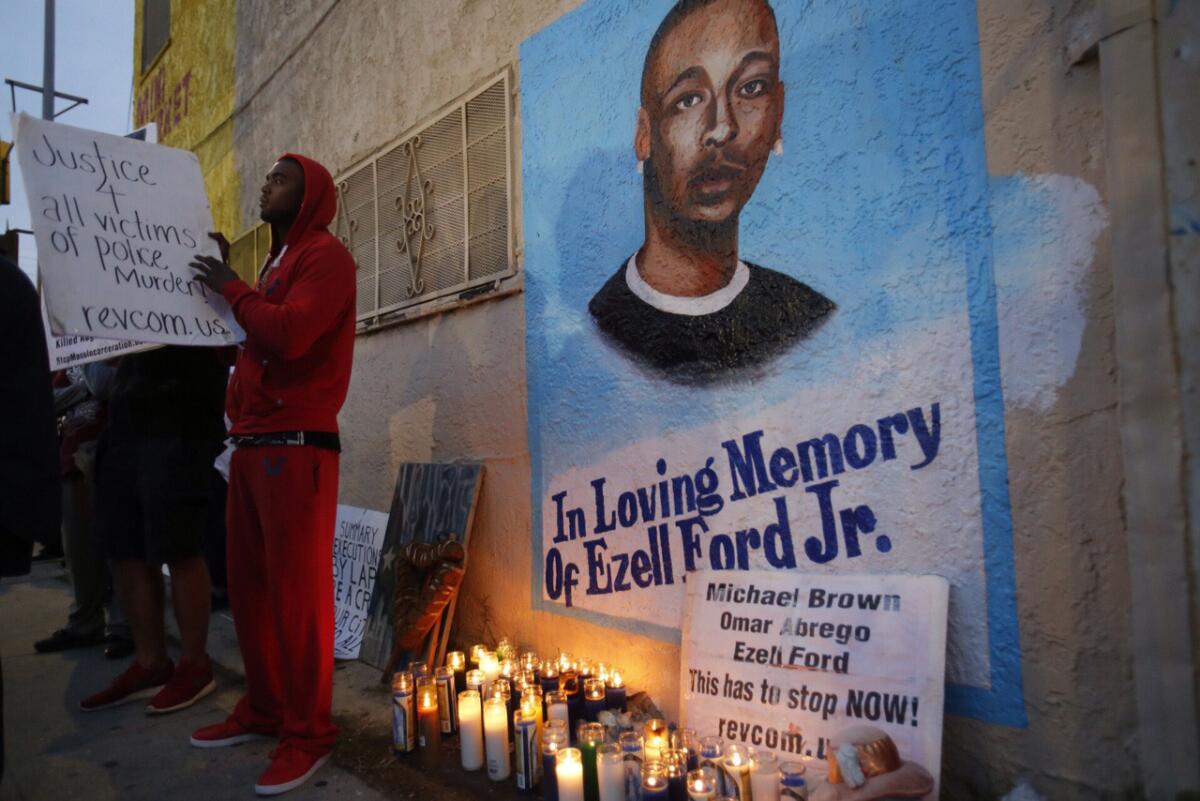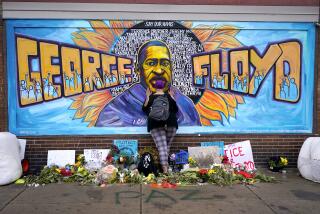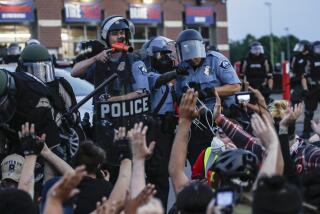Editorial: A very abbreviated history of police officers killing Black people

- Share via
George Floyd, Jamar Clark, Philando Castile. Reading the names of African Americans killed by police in or near Minneapolis alone can boggle the mind, and of course these are only the names that made the national news. Like high-profile police killings in Los Angeles, New York, Chicago, Cleveland, Texas, the Southeast, the Northwest, the East Coast — the manner of killing and the justifications offered vary, as do the consequences for the officers involved. But one common thread running through the many deadly incidents is that the victims are disproportionately black.
Floyd’s life was snuffed out on May 25 as a police officer pinned him on the street for nearly nine minutes, the officer’s knee on the victim’s neck as Floyd protested, “I can’t breathe.”
Clark was pinned to the ground by a knee to his chest in 2015 when a Minneapolis police officer shot him to death.
Castile was shot dead in his car in 2016 by a police officer in a suburban community outside Minneapolis.
Other cities, other police killings. On May 6, Indianapolis police killed Dreasjon “Sean” Reed. On March 13, Louisville, Ky., police killed Breonna Taylor as she lay in her own bed. On Feb. 23, former Glynn County, Ga., Police Officer Gregory McMichael helped corner Ahmaud Arbery in an incident that ended with Arbery shot dead.
Taylor’s killing recalls the horrific 2018 murder of Botham Jean in his own apartment by an off-duty officer whose gross negligence somehow led her to think she was encountering an intruder in her own home. Arbery’s death recalls the 2012 killing of Trayvon Martin, not by a working police officer but by a civilian wanna-be.
When Martin’s killer was acquitted, outraged activists formed the Black Lives Matter movement, which has worked for change and has insisted that African Americans killed by police (or by those who take police powers on themselves) are not forgotten.
In Los Angeles those names include Ezell Ford, a man reportedly suffering from mental illness, shot dead by police in 2014 shortly after the police killing of Michael Brown in Ferguson, Mo. Brown’s killing and the examination of the once-obscure St. Louis suburb brought to light injustices previously unnoticed or ignored: Local government was funded by fines and fees imposed on the mostly African American population. The entire municipal structure had an incentive to oppress black residents.
Ford’s killing underscored the mistreatment of mentally ill people not just on the street, at the hands of police, but in jail and at home, away from the community clinics that were promised but never built. And his death served as a reminder that Los Angeles, despite better police training, tactics and oversight, is not the shining example for the rest of the nation that we sometimes think it is. Police officers in Los Angeles and its smaller neighboring cities are prolific killers of black people. The names of the victims would go unsaid and unremembered outside their families and their communities but for Black Lives Matter, whose members demand that we keep saying them.
That’s why we know names like Michelle Shirley, who like Ford was dealing with mental illness when shot to death by Torrance police in 2016. Or Redel Jones, shot dead in an alley by L.A. police in 2015, and Kenney Watkins, killed by L.A. police the same year.
Not every police killing is straightforward, and not every victim was innocently eating or sleeping in their own home like Breonna Taylor or Botham Jean.
Some of the victims cited by activists appear to have been armed, and the officers involved in such shootings invariably say that their lives were in jeopardy.
But surely we can demand better of our police in incidents like the one that ended in the 2018 deadly shooting in Sacramento of Stephon Clark, whose cellphone officers mistook for a gun. And if 17-year-old Laquan McDonald was holding a knife as he walked down a Chicago street in 2014, surely police had options other than shooting him dead. The same goes for the officer who shot 12-year-old Tamir Rice in Cleveland in 2014 as the boy held a toy gun.
And if, that same year, Eric Garner was committing the crime of selling cigarettes, that’s no excuse for the arresting officer’s deadly chokehold.
“I can’t breathe,” Garner repeatedly gasped while pinned by officers to the sidewalk, just like George Floyd six years later.
At the time of Garner’s death — and Michael Brown’s, Ezell Ford’s, Laquan McDonald’s, Tamir Rice’s and many others — police cautioned the public that what they saw or heard was not the whole story and that police were just doing their duty to protect the public.
After Floyd’s death, though, an astonishing number of law enforcement leaders described it as “murder.” That, at least, is some progress.
More to Read
A cure for the common opinion
Get thought-provoking perspectives with our weekly newsletter.
You may occasionally receive promotional content from the Los Angeles Times.










